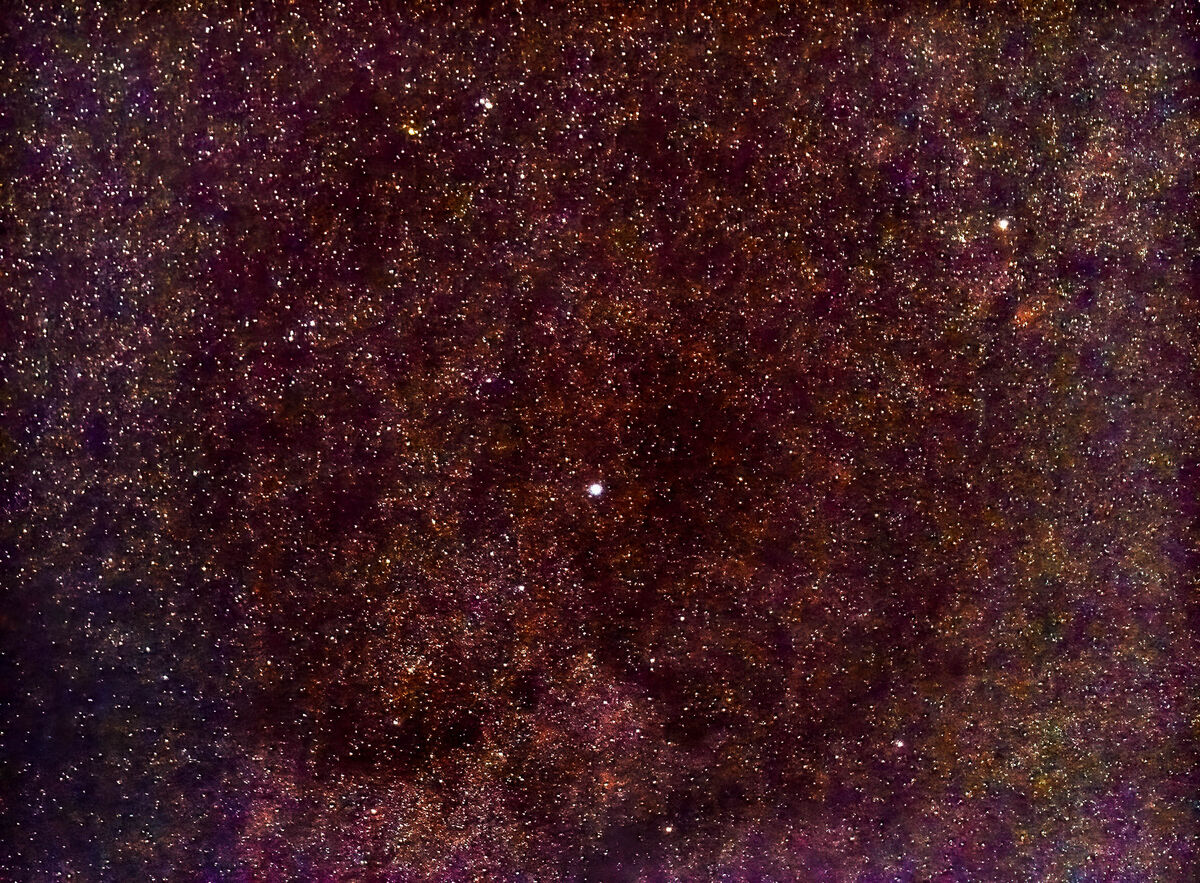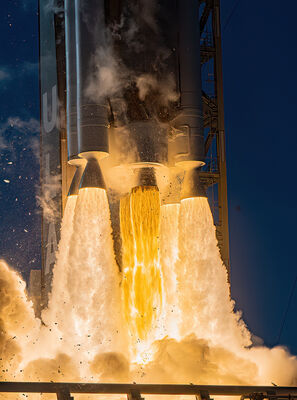Help needed - Night Sky Photography
Jul 31, 2022 01:50:23 #
And here is with the Olympus 60mm f2.8 macro lens. Again, I did not track on this image. 2.5 sec at ISO 3200 and stacked many images. The center star is Deneb and the famous North American nebula is below it is laying on its side. Suitable filters would have brought out the colors more, but you can still see them.
Jul 31, 2022 02:03:30 #
And a few using the Sony A6300 that has been converted to mono sensor.
Ring Nebula in center - actually a very tiny object
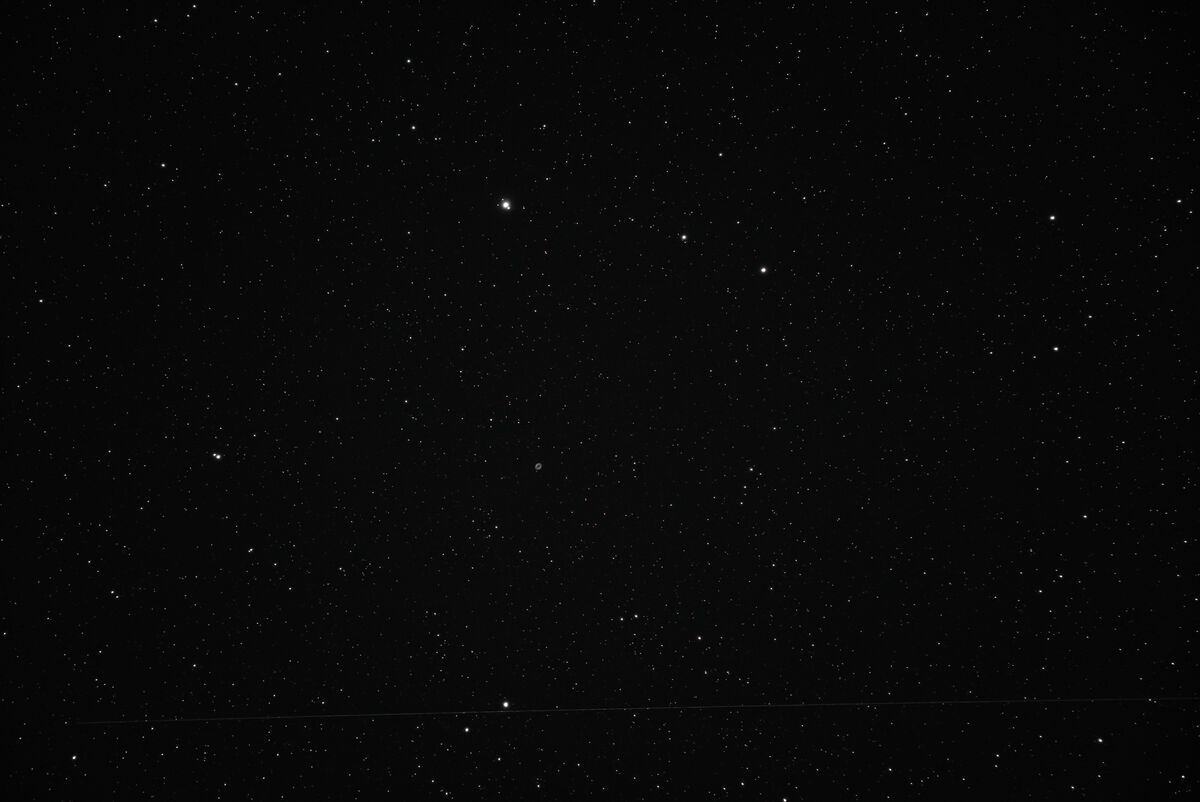
(Download)
M51 - stack of 21 at ISO 1250 - 15 sec each
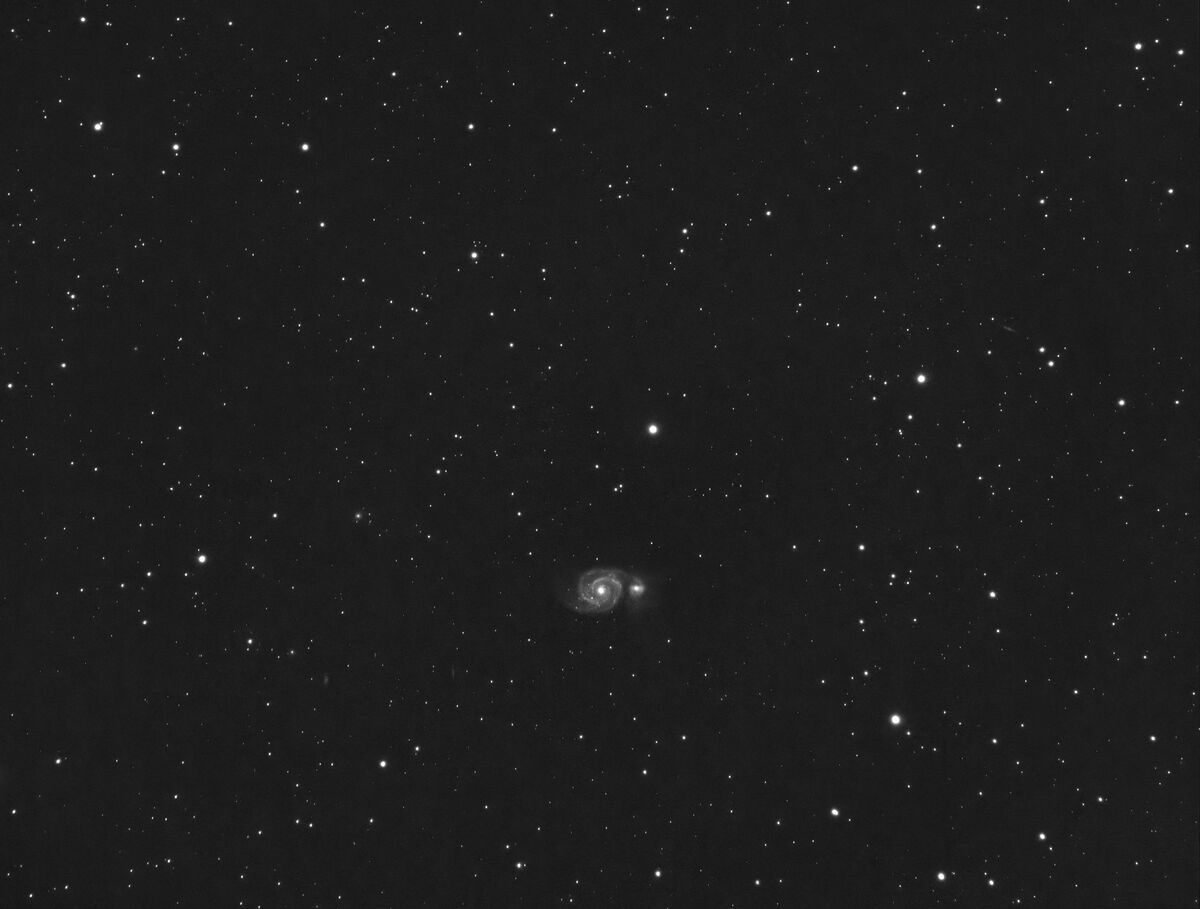
(Download)
M101 galaxy
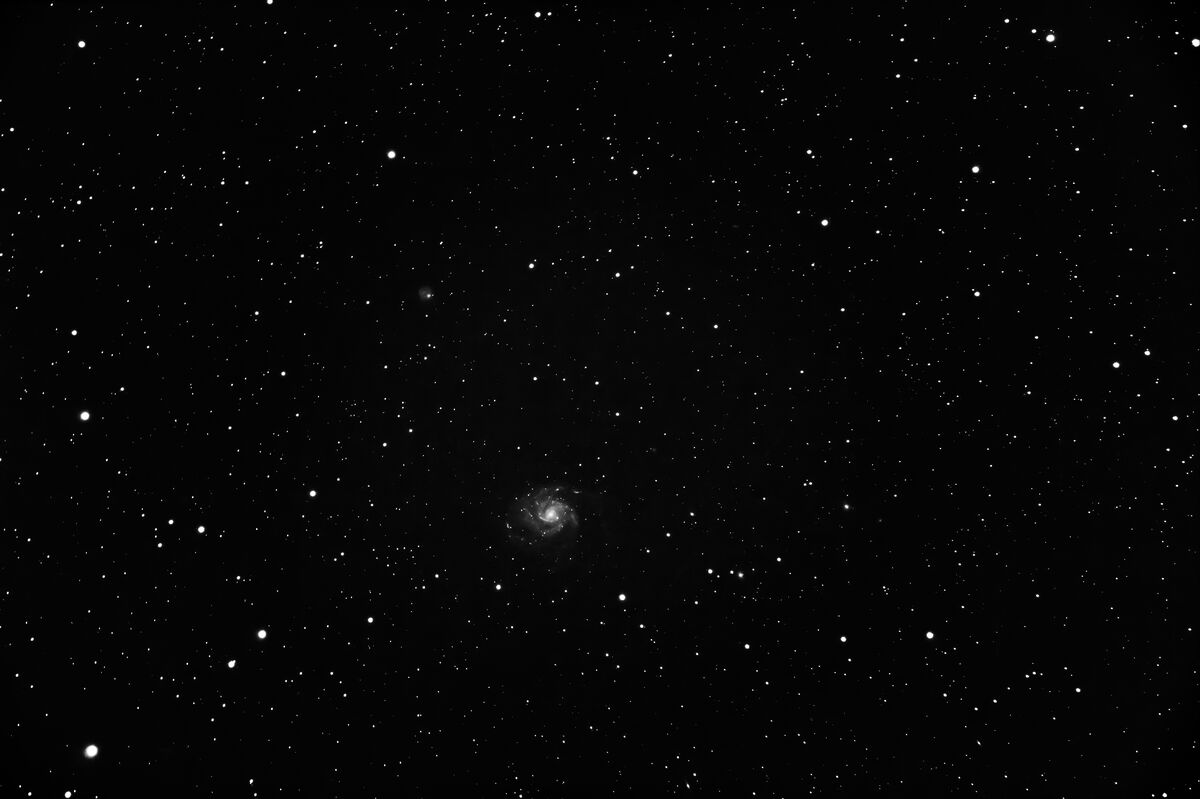
(Download)
Jul 31, 2022 02:18:39 #
Orphoto
Loc: Oregon
As to lens choice. Most people are looking for a wide view on Milky Way, especially if including anything on the ground. Typically 14-35mm if full frame. Faster is better. At least 2.8. 28mm 1.4 or 20mm 1.8 work quite well. The 14mm 1.8 crowd love that one.
As to northern lights, it in part depends on how far north and east you are. If you are in Southern Canada/Alaska the lights could be overhead and you want to go as wide as you can. Down here in Oregon where the lights are near the horizon, a 28mm fast lens does really well. With the lights you will want to keep your shutter speeds to maybe 4 or 6 seconds, so the movement doesn't make the lights feel mushy
As to northern lights, it in part depends on how far north and east you are. If you are in Southern Canada/Alaska the lights could be overhead and you want to go as wide as you can. Down here in Oregon where the lights are near the horizon, a 28mm fast lens does really well. With the lights you will want to keep your shutter speeds to maybe 4 or 6 seconds, so the movement doesn't make the lights feel mushy
Jul 31, 2022 08:07:28 #
cjc2 wrote:
I have been a photographer for a long time, but I've never done any night sky photography, except for fireworks. Would someone with experience discuss lens choice? Milky way? Northern lights? Thanks in advance.
Look at this guy's channel.
https://youtu.be/xzBCkVupOzo
All about astrophotography... from beginners advices to very advanced.
Jul 31, 2022 08:19:26 #
Longshadow wrote:
...After about 15+ seconds you'll start getting star trails...
That really depends on the field of view. Many people start taking wide angle photos of the Milky Way. For a wide angle shot you will need long exposures to see star trails. I did some experiments many years ago and found that with a narrow field of view you can start to see trails with exposures as short as 2 seconds.
10 second exposure, crop of an image taken with a 70mm lens. Nikon D3, ISO 1600, f/2.8
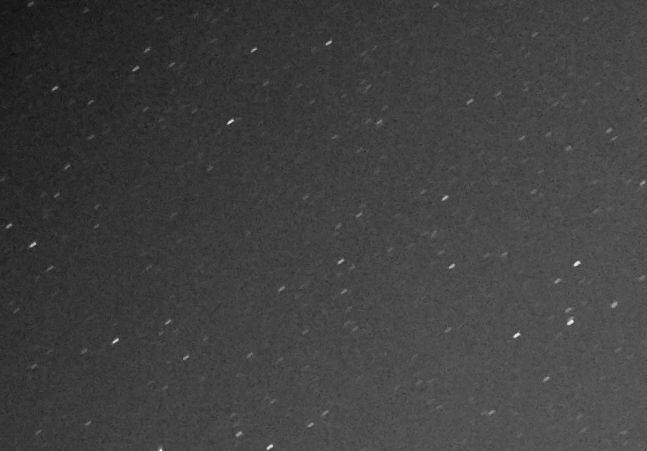
5 exposures, 2 seconds each separated by 10 seconds. Note that this was a digital photo but has been reversed to produce a negative. It is easier to see a dim dark object on a light background than a dim bright spot on a dark background.
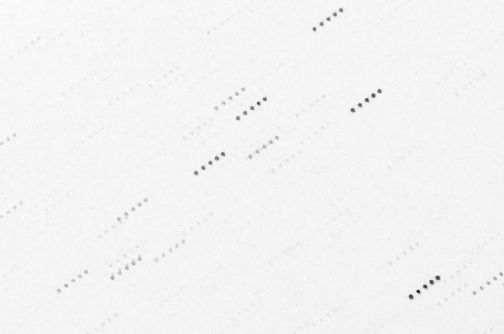
Orion
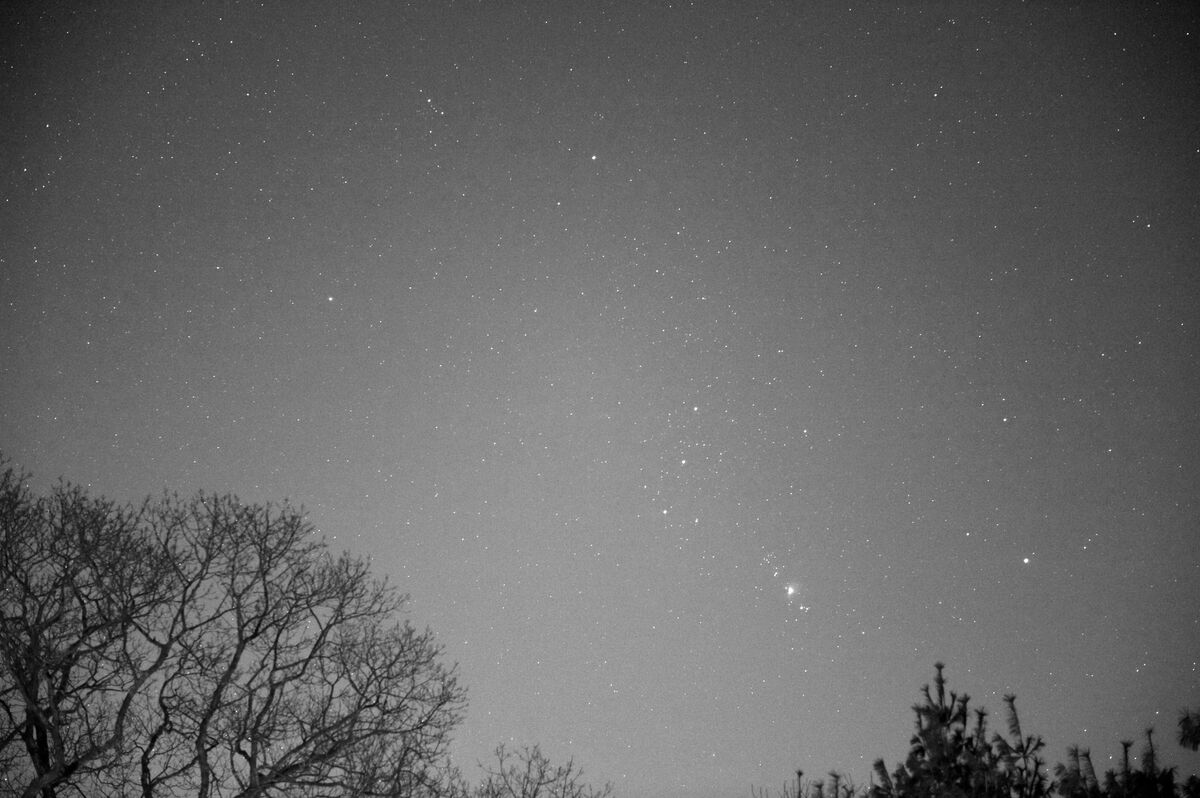
(Download)
Flickr used to have a sky image analyzer. You would give it a sky image and it would tell you which stars are in the image. I haven't tried to use it in about 12 years now.
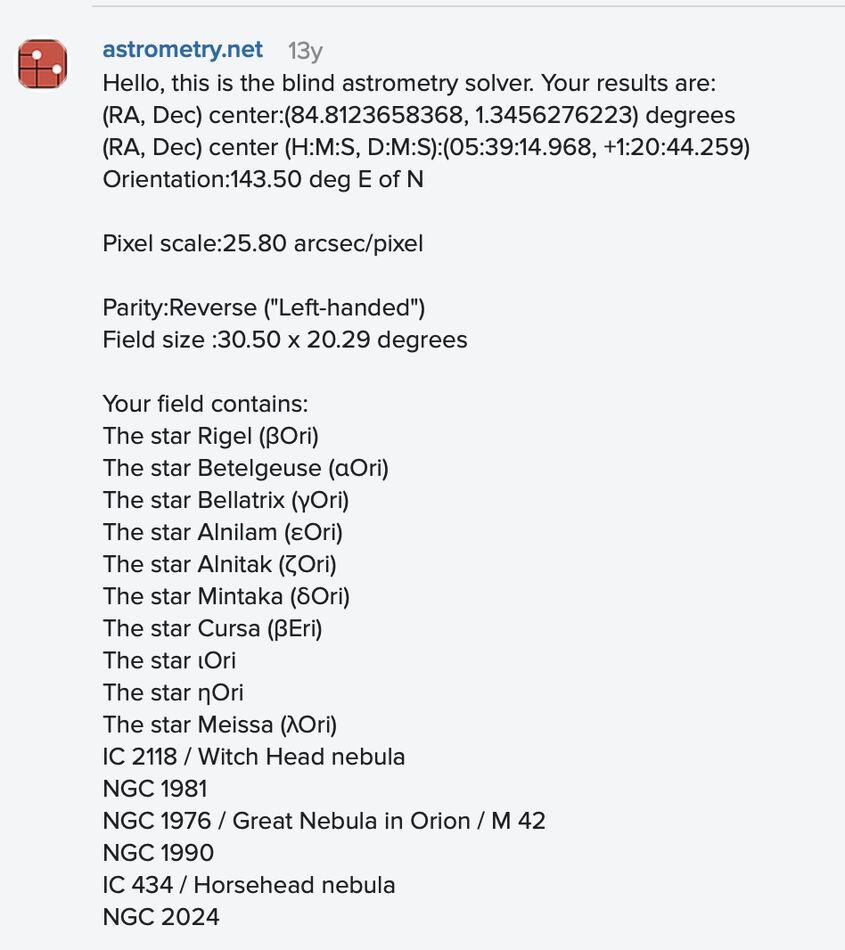
Jul 31, 2022 08:21:20 #
The more zoom you use the more you're zooming in on the movement of the stars. Staying wide allows you to use a slower shutter speed (which is one of the main priorities). The usual advice is to use the widest, brightest lens you can find.
I don't do composites myself but apparently if you get a horizon shot and use that as the foreground (low down) in a shot where the sky is a multi-shot blend, you can get the best of both worlds - a visible, sharp and detailed foreground and a clear, noiseless sky with little or no star trails.
I don't do composites myself but apparently if you get a horizon shot and use that as the foreground (low down) in a shot where the sky is a multi-shot blend, you can get the best of both worlds - a visible, sharp and detailed foreground and a clear, noiseless sky with little or no star trails.
Jul 31, 2022 08:52:14 #
I didnt see reference to the camera vendor you work with, i.e. Canon, Nikon...
I have used Nikon through the years and use primarily 3 different lenses
FX 20mm F/1.8, 16-35 (F/4) are my go to's, my 14/24mm F/2.8 is a backup as it doesnt allow filters
I have used Nikon through the years and use primarily 3 different lenses
FX 20mm F/1.8, 16-35 (F/4) are my go to's, my 14/24mm F/2.8 is a backup as it doesnt allow filters
Jul 31, 2022 08:53:50 #
Longshadow wrote:
As wide an aperture as you can get to let as much light in as possible. I use a 50mm ƒ1.4. Wide/tele depending on how much of the sky you want to capture vs. the aperture available for that focal length.
Tripod with remote shutter release.
After about 15+ seconds you'll start getting star trails.
Lens hood to keep stray light out.
Works best in a dark area, otherwise neighbors lights can cloud the image.
Possibly up the ISO.
Experiment for your camera.
Tripod with remote shutter release.
After about 15+ seconds you'll start getting star trails.
Lens hood to keep stray light out.
Works best in a dark area, otherwise neighbors lights can cloud the image.
Possibly up the ISO.
Experiment for your camera.

Jul 31, 2022 09:02:35 #
Some basics:
1) Take a LOT of shots in RAW using intervalometer, reduce aperture until coma disappears. Use MFT formula to compute exposure time
2) Take calibration shots (Darks, flats, bias)
3) Stack them using Deep Space Stack software
4) Process un Photoshop, Affinity
5) Remove the Stars using StarNet++
6) process image without stars
7) Add stars back as a layer, change blend mode to screen and adjust transparency
8) Crop, correct, etc
1) Take a LOT of shots in RAW using intervalometer, reduce aperture until coma disappears. Use MFT formula to compute exposure time
2) Take calibration shots (Darks, flats, bias)
3) Stack them using Deep Space Stack software
4) Process un Photoshop, Affinity
5) Remove the Stars using StarNet++
6) process image without stars
7) Add stars back as a layer, change blend mode to screen and adjust transparency
8) Crop, correct, etc
Jul 31, 2022 09:04:49 #
cjc2 wrote:
I have been a photographer for a long time, but I've never done any night sky photography, except for fireworks. Would someone with experience discuss lens choice? Milky way? Northern lights? Thanks in advance.
Short to wide angle lens, and super fast, and best a prime lens.
Any of 50mm f/1.4, 50mm f/2, 35mm f/2, 28mm f/2, 24mm f/2, 24mm f/2.8, 20mm f/2, 20mm f/2.8. Basically the best would be F 1.2, 1.4, 1.7, 1.8, 2.0 Lenses. You get the idea. And of course use a tripod!
Jul 31, 2022 09:21:10 #
cjc2 wrote:
Thank you. To ALL. I have a general understanding of how to accomplish this task, just looking for LENS RECOMMENDATIONS! So far, I'm figuring on a fast 50 or less.
Looking at your list, you can get great light with the 50/1.2. The 24-70/2.8 will also serve you well. And…you might try the 14-24(?) to see what you can get.
I have a spot at the edge of perfect darkness up in Maine and had great results with my 24-85 D, 24mm, wide open, 20 seconds, ISO 3200.
With your Zs, you should have little concern for ISO noise, and your speedy lenses should get your shutter speed way down…or spill some joy over to lowering the ISO.
Also, Nikon SnapBridge should work just fine with the Zs for remote release.
Jul 31, 2022 09:53:41 #
cjc2 wrote:
I have been a photographer for a long time, but I've never done any night sky photography, except for fireworks. Would someone with experience discuss lens choice? Milky way? Northern lights? Thanks in advance.
Check out Kristine Rose Photography on Facebook. She offers free 3 sessions on night photography- the sessions are a bout an hour long and live. It covers everything you need. I think she is starting one soon. If you miss the live version you can go back and watch the taped session. She also has a one person exhibition going so you can see her work- it is spectacular. She also leads several photo excursions in different locations.
Jul 31, 2022 10:01:14 #
jerryc41 wrote:
It's surprisingly easy. I took a three-day course... (show quote)
Jerry,
Thanks for all of the great info!!!
Smile,
JimmyT Sends
Bravo Zulu




Jul 31, 2022 10:05:46 #
R.G. wrote:
.....Staying wide allows you to use a slower shutter speed (which is one of the main priorities).....
Sorry - should have said faster shutter speed (to reduce the trails).
Jul 31, 2022 10:40:10 #
cjc2 wrote:
I have been a photographer for a long time, but I've never done any night sky photography, except for fireworks. Would someone with experience discuss lens choice? Milky way? Northern lights? Thanks in advance.
CJ, we have a section on Astrophotography where you can pick up great tips. Except for you being a professional, I feel like we are similar in our styles and interests. In fact, I'm going to the PONY Mustang 10U World Series to get some shots today.
But I digress. Astro is fun and always on my to-do list on vacation. It isn't hard to do, but quite a process to come out with creative, fun images for print. I use my Z6 with my 14-30 f4 lens. A Rokinon 14mm f2.8 is even better. Basically, you want to draw in as much light as posible. That directly affects length of SS. I usually wind up between 15-24 seconds, 14-18mm and 1600-6400 ISO. Any more and you get star trails and drift. 5-6 test shots and you can dial in the right exposure. I haven't tried the Z9 yet, but I see great results.I think it also focusses on infinity automatically in Stargaze mode.
One key, get somewhere very dark. Big Bend Texas is the best in the country, but these two sites will help you. https://darksitefinder.com/map/ and https://www.darksky.org/our-work/conservation/idsp/finder/.
Lastly, spend a very cheap $10 and get the Photopills app for your phone. It is the best tool for scouting and planning your astro session.
EDIT Update: The longer lens you use, the shorter your exposure time. You can use a 50mm or 200mm, but you will have to stack several 4-10 second exposures to get your final image. The 500 rule is divide 500 by focal length to get exposure time. e.g. 500/50mm =10 seconds. That formula is somewhat out of date with new cameras and higher native ISO's. I use 300 as a starting point (e.g. 300/14 = 21 seconds at 3200 ISO) and adjust from there.
If you want to reply, then register here. Registration is free and your account is created instantly, so you can post right away.

